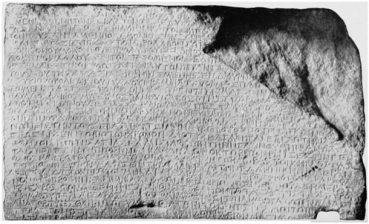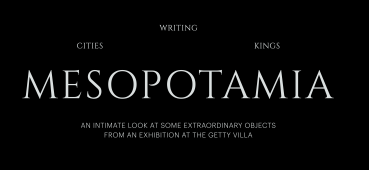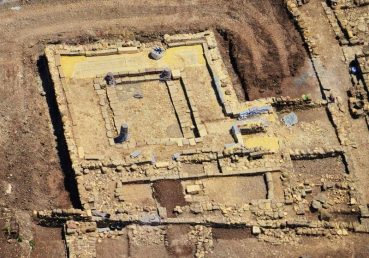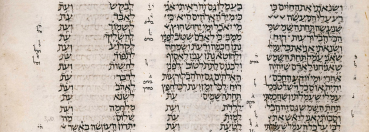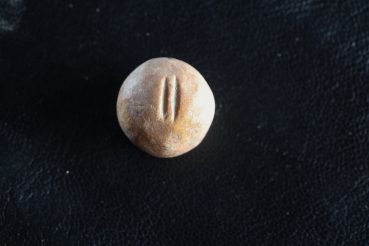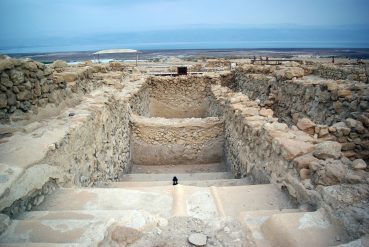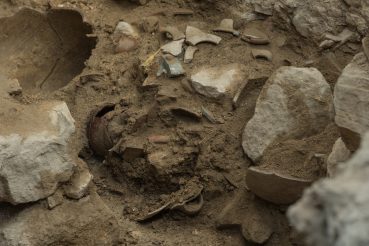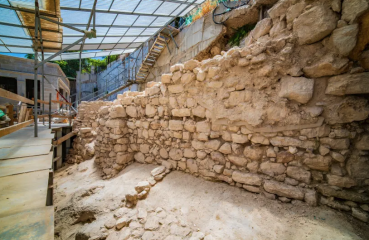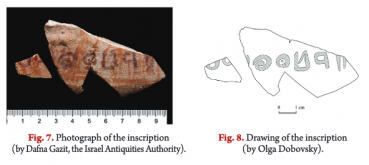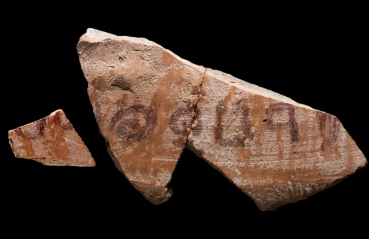The Greek word translated “gospel” or “good news” is evangelion. It can range in meaning from general good news or report (as in, “we heard good news today from the doctor”) to an official political proclamation about a ruler or king. In this latter sense, there is an interesting inscription dating from around 9 BC regarding Caesar Augustus. It contains references to Augustus (whose very name means “revered one” and who was also called divi fili, “Divine Son” or “Son of God”) as the savior and bringer of peace. The inscription says that the birth of Augustus was “the beginning [arxen] of the good news [evangelion] for the world”. This is very similar to the incipit of Mark’s gospel: “The beginning [arxe] of the good news [evangelion] of Jesus the Anointed, Son of God…”
Continue readingCategory Archives: Biblical Studies
Great Visual Walk Through of Mesopotamia: Civilization Begins From the Getty Villa and the Louvre
This is a well-done, scrollable tour of the exhibition Mesopotamia: Civilization Begins from April 21–August 16, 2021 at the Getty Villa. A more standard page for viewing elements of the exhibit can be found here.
Another Second-Temple Synagogue Discovered in Migdal
Image Credit: Excavating the ruins of the second synagogue at Migdal. Credit: University of Haifa
Discoveries of Second Temple synagogues in the Holy Land is rare. In 2009 one was discovered in Migdal/Magdala, a village to the west of Capernaum on the north end of the Sea of Galilee. Now there’s news of the discovery of a second. Migdal/Magdala may have been the hometown of Mary Magdalene. Here are links to articles:
Continue readingEcclesiastes 3 in the Leningrad Codex
The images below are from a page of Ecclesiastes (Qohelet) from the Leningrad Codex, which was hand-written in Cairo in 1008 CE. This is the codex that modern versions of the English Old Testament use as a base (in the printed form known as the Biblia Hebraica Stuttgartensia). It is amazing to me that I can pull this up and study it with a click. What a time to be alive. There is a time and a season for everything under the sun. This is our time.
Continue reading“Hevel hevalim…”: The fleeting vapor of Ecclesiastes and a Lost Son
This past year I have been following the readings in Hebrew Bible with a group of people. This week’s readings include Ecclesiates (Qohelet) and Song of Songs. The reading plan is the entire Hebrew Bible in a year, and the readings are necessarily quick. The overview readings allows little time for full study, and almost daily I wish we could slow down and engage deeply in the beauty of the passages we are reading. Hopefully, the overview will draw readers into further study later.
Continue readingDiscovery In Jerusalem of Mislabeled Stone Weight
Image Credit: Eliyahu Yanai, City of David
This is a really great discovery. A two-gerah stone weight discovered in Jerusalem that is mislabeled in terms of its actual weight.
Continue readingThe Passion Translation
My thoughts from a couple of recent conversations about Bible translation and The Passion Translation:
The Passion Translation is not a translation. It is a paraphrase. An extremely loose paraphrase made by a single author.
Continue readingNew Theory that Qumran Was A Pilgrimage Location Rather Than Permanent Residence for Sectarians
(Photo Credit: Berthold Werner, Qumran, Public Domain)
HaAretz premium has an article on a theory, based on the Damascus Document, that Qumran was primarily a festival location and not a permanent dwelling for the Essene (or other) sect.
From the article:
Archeologists may have discovered evidence of earthquake during the reign of Uzziah
(Photo Credit: Eliyahu Yanai/ City of David. From The Times of Israel caption: “Remains of tools discovered in Jerusalem’s City of David within a layer of destruction from the 8th century BCE, which coincided with a massive earthquake mentioned in the Bible. The tools were likely shattered during the quake.”)
Read the full article in The Times of Israel. Here is a section containing quotes from Aren M. Maeir of Bar-Ilan University on the dating of the find:
Continue reading‘According to Bar-Ilan University Prof. Aren M. Maeir, the director of the Tell es-Safi/Gath Archaeological Project, the proof of earthquake is “based on specific ways that walls collapse — in our case evidence of the ‘waves’ of energy that hit after an earthquake.”
Maeir was able to date the earthquake layer based on the levels below, including the securely dated Hazael destruction of 830 BCE. Above the ample signs of battle and conquest was “a period of abandonment with windblown sediments, then the earthquake, and then above it, two levels dating to the late 8th cent BCE.”’
Announcement of the Discovery of a Section of Wall in Jerusalem, possibly dating to the period of the Babylonian Invasion
(photo credit: KOBI HARATI/CITY OF DAVID, from The Jerusalem Post)
The Jerusalem Post and other outlets are carrying this news. The announcement comes on on the eve of the Ninth of Av, a day marking terrible calamities in Jewish history (the fall to the Babylonians in 587/586 BCE, the destruction of the Temple in 70 CE, and several others), and this news release may have been timed due to the discovery’s connection with the first destruction of Jerusalem on that date.
Continue readingMore on the Jerubbaal Inscription
Chris Rollston, Yosef Garfinkel, Kyle H. Keimer, Gillan Davis, Saar Ganor provide a good overview and details related to the Jerubaal inscription. Here is the full article in PDF format from the open-access and peer-reviewed Jerusalem Journal of Archeology from Hebrew University.
Continue readingJumping to Conclusions: ‘This’ does not necessarily mean ‘that’ in the discovery of an ancient name.
The Jerubbaal inscription. (photo credit: DAFNA GAZIT/ISRAEL ANTIQUITIES AUTHORITY)
This past week it was announced by the Israeli Antiquities Authority that a 3,100 year piece of pottery was excavated at Khirbat er-Ra‘i, near Qiryat Gat, in Israel. The excitement is that the name Jerubaal/Yerubaʿal is inscribed on the fragment, which is a name used for Gideon in the Book of Judges (Judg 6:32; 7:1; 8:29, 35-9:2; 9:5, 16, 19, 24, 28, 57; 1 Sam 12:11), and this is the first time that name has been discovered in material dating from the period of the Judges.
Continue reading